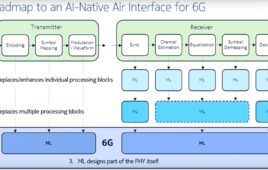Placement of radar sensors often involves compromises between vehicle design and sensor performance. They are therefore usually located behind brand emblems and bumpers or integrated into rear-view mirrors or other plastic parts. To enable reliable transmission of the radar signals despite the radomes, the radome material must be sufficiently transparent and homogeneous in the 77 GHz and 79 GHz bands. Otherwise, reflections and transmission attenuation in the radar sensor’s field of view will considerably impair sensor performance. The total amount of radar power that passes through the radome is a crucial factor. High losses reduce the maximum range within which a radar can detect a target.
R&S QAR: an innovative imaging automotive radome tester
To prevent this, the automotive radome tester measures, visualizes and analyzes the radar compatibility of radomes and bumpers using a proven imaging technique. The millimeterwave imaging system of the R&S QAR is based on planar transmit and receive antenna arrays operating in the E band. The system performs spatially resolved reflection measurements, allowing reliable evaluation of radome performance within seconds. The high resolution of the resulting reflection images makes it easy to identify even the smallest anomalies in the radome structure. Since the R&S QAR operates in the frequency range of the 77 GHz and 79 GHz bands used for automotive radar, defects visible in the millimeterwave image directly correspond to radar signal impairments.
The R&S QAR supports all material designs and form factors up to 30 cm × 50 cm. It delivers detailed measurement results that users can export to other systems. It also supports full remote control and can be integrated into highly automated test systems.




